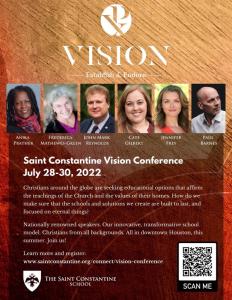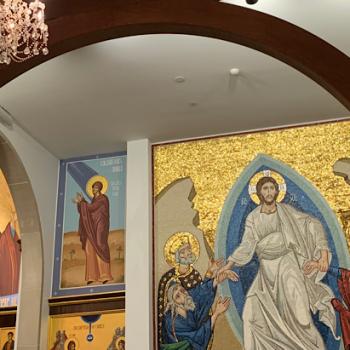On this the fifth day of the fifth month in the year 2020, The Saint Constantine Strategy will turn five. After four high school graduations, this spring marks the first graduating college class to go through the program. We make a classical higher education available to everyone who can do the work.
Practical Questions, Practical Answers
There is no golden age of higher education. When class size was good and professors were valued, too many people were denied access to that education. That was terrible.
When access to education increased, too often American higher education did not protect one-on-one tutoring by a professor. We allowed class sizes to become swollen. Professors and educators stopped being involved in the business side of the school. We did many things very well at good schools, such as research, but access to schooling that centered in mentoring, character formation, and the Socratic method faded.
Such small classes were “too expensive.” Meanwhile, there were fewer full time teachers in many schools compared to swollen class sizes. Administration became cut off from education and spiritual formation.
Could small, classical, liberal arts be saved while increasing access? Could the debt be driven out of a Liberal Arts education? Could all administrators teach? What would happen if education were reorganized to make kindergarten through college one?
Five years later, despite a pandemic, we know the answers to these questions. Fewer administrators are possible, all can teach, and debt is unnecessary to produce not just a Liberal Arts education, but an education based on one-on-one Oxford style tutorials. Most students, not just the gifted and talented, can earn a year of college while in high school. All this can and should be done in an urban setting, as diverse as America.
Five Philosophical Principles
Beginning on February 14, a group gathered to consider an educational adventure. They waited to see if the possibility could become even probable! On May 5, a daring board of Houston business and spiritual leaders took a chance and hired the first of this group.
From Saint Valentine’s Day to Cinco de Mayo, five ideas shaped the Constantine Strategy:
Everyone would teach when possible.
Educators would be the decision makers.
The continuing dialogue between “Athens” and “Jerusalem” would be central to our method.
Mentoring would take precedence over buildings or institutions (even Saint Constantine).
Educational would be affordable and accessible.
This has been done. There is more to do as we strive to do classical, Christian education better.
Three Christian Principles
We are Orthodox.
We ally with all we can.
We serve all we can.
At the deepest level we are Orthodox Christian education. We begin with Saint Basil, read Homer on his recommendation, and so the dialogue begins. Our conversation has not stopped yet, as Plato predicted and Scriptures confirm.
So far, so good, the next five years, God willing, will see the movement spread. We do not need one Constantine or a single Helen, we are a republic and not an Empire. Instead, we need a multitude of citizen saints all serving under the sign of Christ’s Cross.














